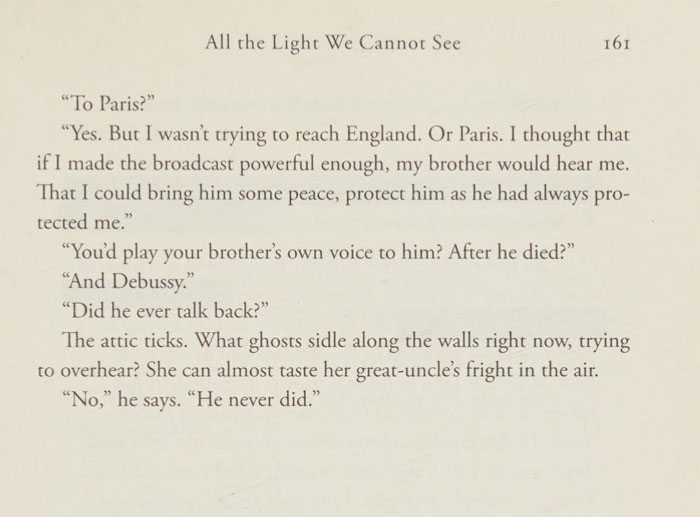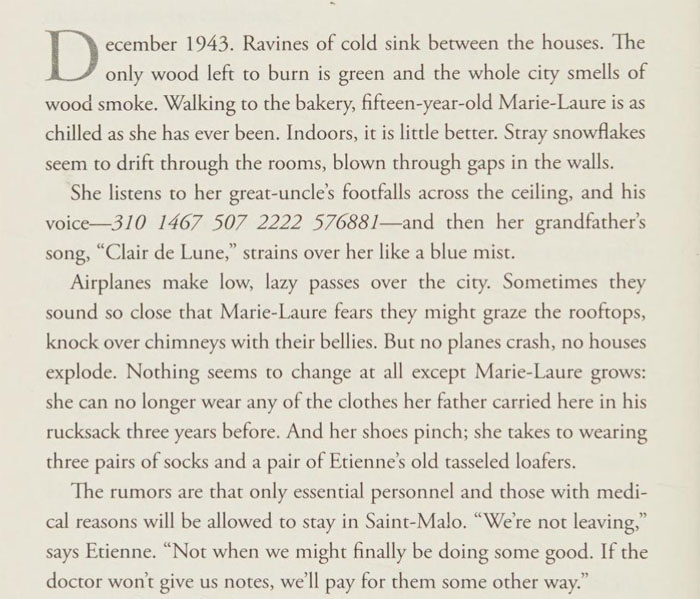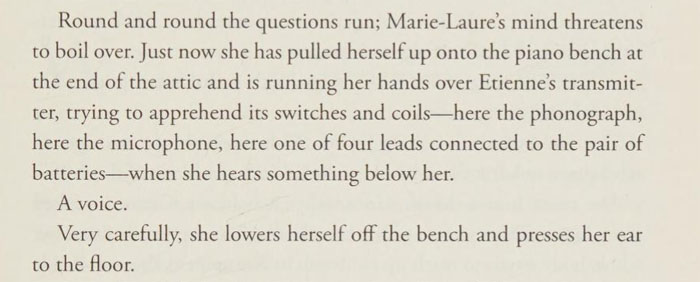Page 158
We had a dream together,
Henri and I, to make recordings and sell them. He had the voice
and I had the brains and back then everyone wanted gramophones.
And hardly anyone was making programs for children. So we contracted
a recording company in Paris, and they expressed interest, and I
wrote ten different scripts about science, and Henri rehearsed them,
and finally we started recording.

Page 159
'The gramophone company
in Paris wasn't interested anymore, but every night I played the
ten recordings we'd made, until most of them were worn out. And
his song...Debussy's 'Clair de Lune.'"



"Clair de Lune,"
a song that makes her think of leaves fluttering, and the hard ribbons
of sand beneath her feet at low tide. The music slinks and rises
and settles back to earth, and then the young voice of her long-dead
grandfather speaks: There are ninety-six thousand kilometers of
blood vessels in the human body, children! Almost enough to wind
around the earth two and a half times...

She listens to her
great-uncle's footfalls across the ceiling, and his voice -- 310
1467 507 2222 576881 -- and then her grandfather's song, "Clair
de Lune," strains over her like a blue mist.

Page 352
-- here the phonograph,
here the microphone...

Page 377

